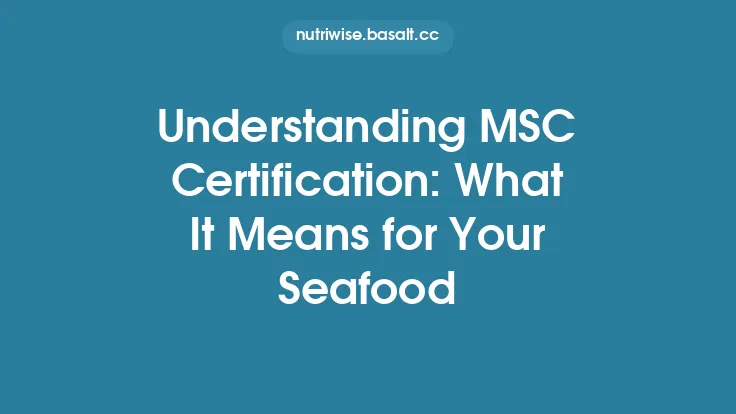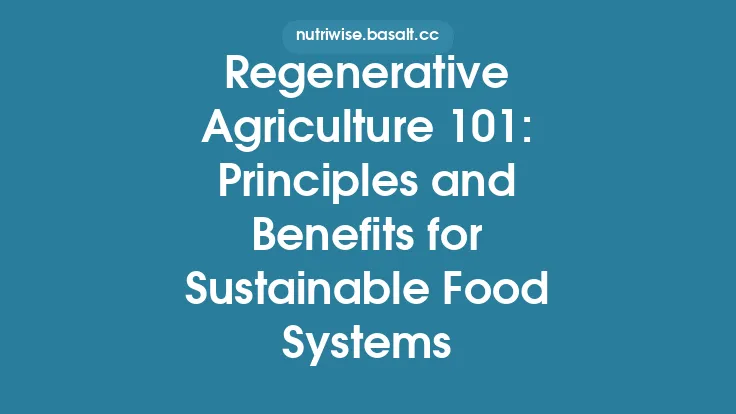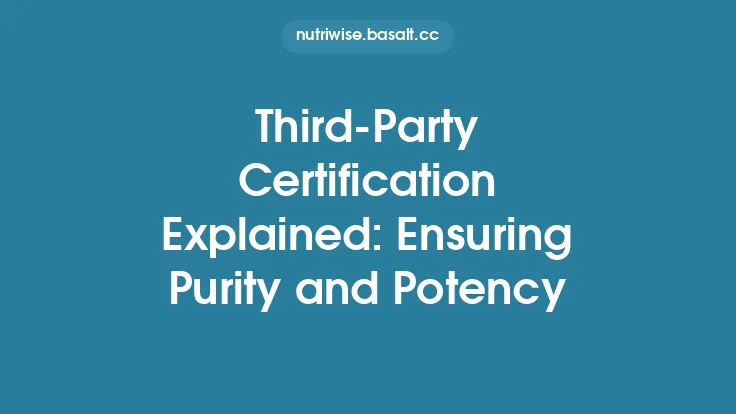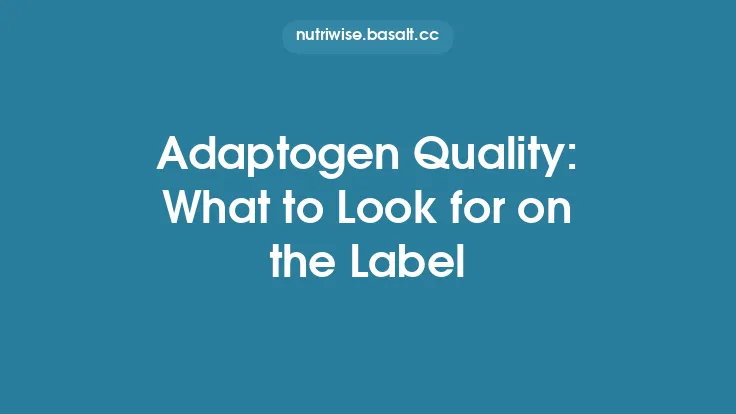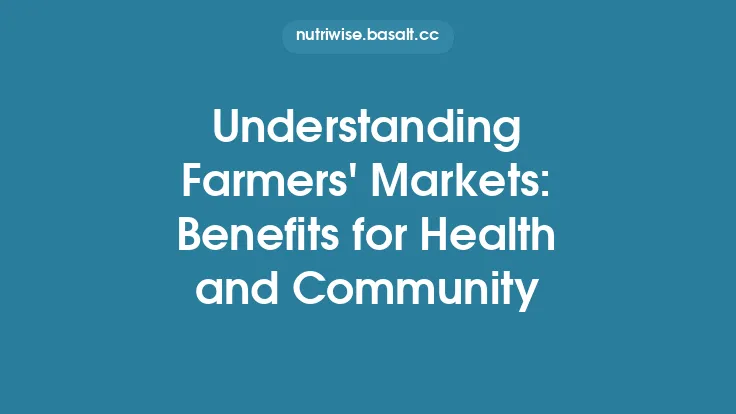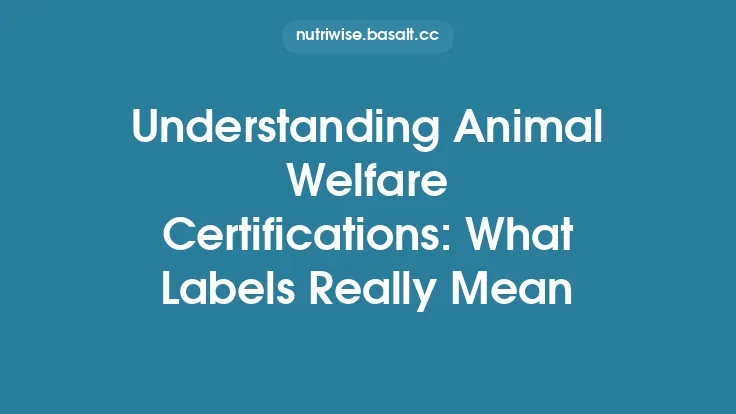Regenerative certification has emerged as a powerful bridge between the growing consumer demand for responsibly produced food and the ambitious goals of farmers seeking to restore ecosystems while maintaining profitable operations. Unlike generic “organic” labels, which primarily restrict synthetic inputs, regenerative certifications evaluate a farm’s holistic impact on soil health, biodiversity, water cycles, and carbon sequestration. By setting measurable standards and requiring third‑party verification, these programs give shoppers confidence that the products they purchase contribute to long‑term ecological resilience, while providing farmers with a clear roadmap and market incentives to adopt practices that go beyond sustainability toward true regeneration.
What Regenerative Certification Actually Measures
Regenerative certification schemes differ in their exact criteria, but most converge on a core set of performance indicators:
| Indicator | Typical Metric | Why It Matters |
|---|---|---|
| Soil Organic Matter (SOM) | % increase in SOM over a baseline period (often 3–5 years) | Higher SOM improves water retention, nutrient cycling, and carbon storage. |
| Carbon Sequestration | Tons of CO₂e removed per hectare per year | Direct contribution to climate mitigation and eligibility for carbon credits. |
| Biodiversity Index | Species richness of plants, insects, and soil microbes | Diverse ecosystems are more resilient to pests, disease, and climate extremes. |
| Water Use Efficiency | Ratio of crop yield to water applied (mm mm⁻¹) | Efficient water use reduces pressure on local aquifers and improves drought resilience. |
| Cover Crop and Reduced Tillage Adoption | % of field area under cover crops; number of tillage events per season | Minimizes soil erosion, enhances microbial activity, and reduces fuel use. |
| Nutrient Management | Balance of nitrogen, phosphorus, potassium inputs vs. crop removal | Prevents leaching, protects waterways, and optimizes fertilizer use. |
| Animal Welfare (if applicable) | Stocking density, grazing rotation length, and access to pasture | Aligns livestock management with ecosystem health goals. |
Each certification body assigns weightings to these metrics, often requiring a minimum threshold for overall compliance. Some programs also incorporate social criteria, such as fair labor practices and community engagement, to ensure that regeneration benefits extend beyond the field.
How the Certification Process Works
- Pre‑Assessment (Self‑Audit)
Farmers conduct an internal audit using the certification’s checklist. This step helps identify gaps and estimate the effort required to meet the standards.
- Implementation Phase
Based on the audit, growers may adopt or scale up practices such as diversified rotations, strategic cover cropping, or precision nutrient management. Documentation—field maps, input logs, and soil test results—is collected throughout this period.
- Third‑Party Verification
An accredited auditor visits the farm, reviews records, and conducts on‑site measurements (e.g., soil core sampling for SOM). The auditor may also interview workers and review any community impact reports.
- Certification Decision
If the farm meets or exceeds the required thresholds, the certifying body issues a certificate valid for a set period (commonly 1–3 years). Ongoing compliance is monitored through annual or biennial audits and spot checks.
- Labeling & Market Access
Certified farms can use the program’s logo on packaging, marketing materials, and point‑of‑sale displays. Many retailers have dedicated shelf space for regenerative products, often commanding price premiums.
Benefits for Farmers
Economic Incentives
- Price Premiums: Retailers and direct‑to‑consumer channels frequently pay 10–30 % more for certified products, reflecting the added value of ecosystem services.
- Reduced Input Costs: Practices required for certification—such as cover cropping and reduced tillage—lower reliance on synthetic fertilizers and pesticides, cutting expenses.
- Access to New Markets: Certification opens doors to institutional buyers (e.g., school districts, hospitals) that have sustainability procurement policies.
Risk Management
- Climate Resilience: Higher SOM and diversified cropping systems improve drought tolerance and reduce flood damage.
- Regulatory Buffer: As governments tighten environmental regulations, farms already meeting regenerative standards may face fewer compliance penalties.
Knowledge Transfer
- Technical Support: Many certification programs partner with extension services, offering workshops, soil testing labs, and data analytics tools.
- Peer Networks: Certified growers often join regional coalitions, facilitating the exchange of best practices and collective bargaining for inputs.
What It Means for Consumers
Transparent Assurance
When a product bears a regenerative label, the consumer can be confident that the food was produced under a set of rigorously audited standards. This transparency reduces the “greenwashing” risk that plagues many sustainability claims.
Healthier Food Choices
While the primary focus of regenerative certification is ecosystem health, the associated practices—such as reduced synthetic inputs and enhanced soil biology—often correlate with higher micronutrient density and lower pesticide residues. Consumers benefit from food that is both environmentally and nutritionally superior, even if the certification does not directly measure nutrient content.
Supporting a Positive Feedback Loop
Purchasing regenerative products creates market demand that incentivizes more farmers to adopt regenerative practices. This, in turn, expands the supply of responsibly produced food, driving down costs and making regeneration a mainstream agricultural model.
Key Certification Programs in the United States and Beyond
| Program | Origin | Core Focus | Notable Features |
|---|---|---|---|
| Regenerative Organic Certification (ROC) | Rodale Institute (US) | Soil health, animal welfare, social fairness | Requires a minimum of 5 % increase in SOM over three years. |
| Carbon Farming Initiative (CFI) | Australian Government | Carbon sequestration, biodiversity | Provides tradable carbon credits directly to farmers. |
| Regenerative Agriculture Certification (RAC) | Soil Carbon Coalition (US) | Carbon capture, water stewardship | Offers a tiered system (Bronze, Silver, Gold) based on performance. |
| Demeter Biodynamic Certification | International (Germany) | Biodynamic principles, holistic farm management | Includes strict limits on synthetic inputs and emphasizes lunar planting calendars. |
| Regenerative Food Systems (RFS) Label | European Union (pilot) | Integrated ecosystem services, social equity | Requires third‑party verification and public reporting of impact metrics. |
Each program publishes its methodology online, allowing stakeholders to compare criteria and select the label that aligns with their values and market goals.
Challenges and Criticisms
Standardization Gaps
With multiple certification bodies, criteria can vary widely, leading to consumer confusion. Efforts are underway to develop inter‑certifier harmonization frameworks, but full alignment remains a work in progress.
Verification Costs
Third‑party audits and soil testing can be expensive, especially for small‑scale producers. Some programs mitigate this by offering group certification models, where a cooperative shares audit costs.
Data Transparency
While certifications require data collection, the extent to which this information is publicly disclosed varies. Greater openness would enable independent researchers to assess the real-world impact of regenerative agriculture on climate and biodiversity.
Market Saturation
As the label proliferates, there is a risk of credential fatigue, where consumers become desensitized to multiple sustainability claims. Clear, differentiated messaging is essential to maintain the label’s credibility.
Future Directions
- Digital Traceability
Blockchain and other distributed ledger technologies are being piloted to record every step of the regenerative verification process—from field sensor data on soil carbon to final packaging. This could provide immutable proof of compliance and streamline audits.
- Integration with Carbon Markets
As governments adopt stricter climate policies, regenerative certifications that quantify carbon sequestration may become eligible for government-backed carbon credits, creating an additional revenue stream for farmers.
- Consumer Education Campaigns
Partnerships between certification bodies, retailers, and NGOs aim to develop standardized educational materials (e.g., QR codes linking to impact dashboards) that help shoppers understand the tangible benefits of their purchase.
- Policy Alignment
Some jurisdictions are considering incentivizing regenerative certification through tax credits or grant programs, recognizing its role in meeting national climate and biodiversity targets.
- Science‑Driven Metric Evolution
Ongoing research is refining the most predictive indicators of ecosystem health. Future certification updates may incorporate soil microbiome diversity indices or remote sensing data to capture landscape‑scale impacts more accurately.
Practical Steps for Farmers Considering Certification
- Conduct a Baseline Soil Assessment – Use a reputable lab to measure SOM, bulk density, and nutrient levels. This establishes the starting point for improvement targets.
- Map Existing Practices – Document crop rotations, tillage frequency, cover crop species, and livestock grazing patterns. Identify gaps relative to the certification’s checklist.
- Develop a Transition Plan – Prioritize low‑cost, high‑impact changes (e.g., adding a winter rye cover crop) and set realistic timelines for meeting each metric.
- Engage a Mentor – Many certification programs pair new applicants with experienced certified farms for guidance and peer learning.
- Secure Funding – Explore USDA Conservation Stewardship Program (CSP) funds, state-level regenerative grants, or private impact‑investment capital to offset upfront costs.
- Track Progress Continuously – Implement a simple data management system (spreadsheets, farm management software) to log inputs, yields, and soil test results.
- Prepare for the Audit – Organize documentation, ensure field access for auditors, and conduct a mock audit if possible.
Bottom Line
Regenerative certification translates complex ecological goals into concrete, market‑ready standards that benefit both producers and consumers. By demanding measurable improvements in soil health, carbon capture, biodiversity, and water stewardship, these programs provide a trustworthy signal that the food on our plates is contributing to a healthier planet. For farmers, certification offers a pathway to higher revenues, reduced input costs, and greater resilience against climate volatility. For shoppers, it delivers confidence that their purchasing choices are aligned with long‑term environmental stewardship. As the certification landscape matures—through better data transparency, digital traceability, and policy support—it will play an increasingly pivotal role in scaling regenerative agriculture from niche farms to the global food system.
